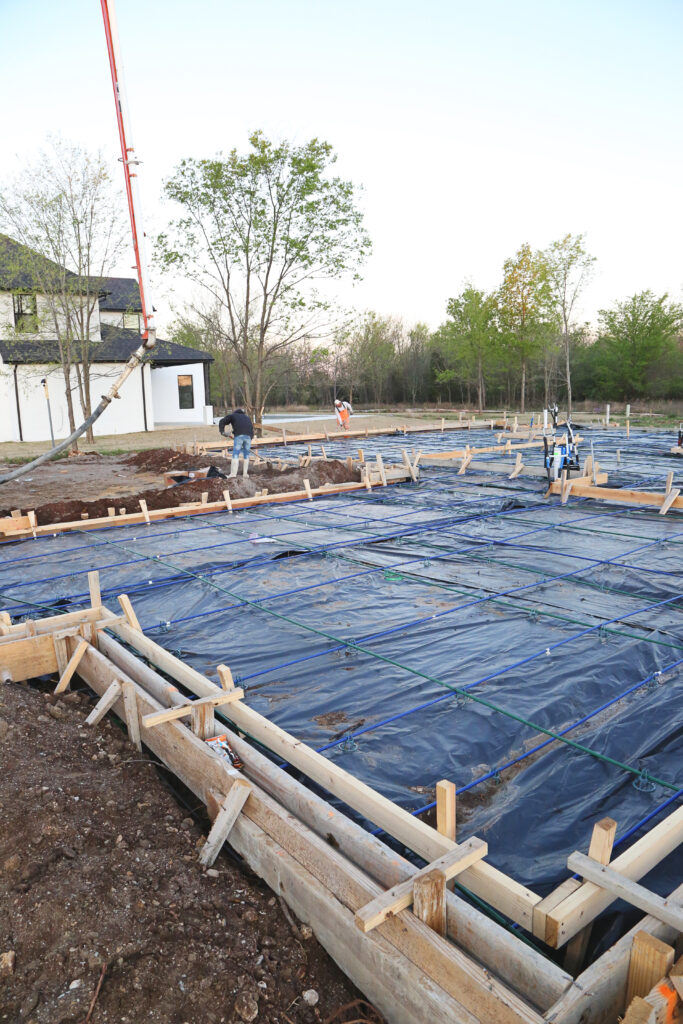
Stem Wall Foundation Details: What You Need to Know for a Stronger Home
When it comes to building a sturdy, long-lasting home, the foundation is one of the most critical elements. For many structures, a stem wall foundation provides the perfect balance of strength, durability, and flexibility to handle various site conditions. But what exactly does a stem wall foundation entail, and why is it such a reliable choice? At Innovative Concrete Solutions, we’re here to break down the key stem wall foundation details so you can make informed decisions for your home.
What Is a Stem Wall Foundation?
A stem wall foundation combines a poured concrete footing with a vertical wall (the “stem wall”) that supports the structure above. This type of foundation is commonly used in areas where the soil conditions, slope, or need for crawl space access require a raised foundation. The stem wall serves as a transition between the footing and the building’s structure, providing stability and a level base for construction.
Stem wall foundations are popular for residential and commercial buildings due to their versatility and ability to handle various environmental challenges.
Key Stem Wall Foundation Details
Here are the essential components and steps involved in constructing a stem wall foundation:
1. Footings
The footing is the base of the foundation, poured directly onto compacted soil. Its purpose is to distribute the weight of the structure evenly and prevent settling. Footings are typically wider than the stem wall and reinforced with rebar for added strength.
2. Stem Wall
The stem wall is a vertical wall made of reinforced concrete or concrete masonry units (CMUs). It is constructed on top of the footing and extends above ground level, providing a solid platform for the structure. Rebar is often embedded in the wall to enhance its load-bearing capacity.
3. Vapor Barrier and Insulation
To prevent moisture from seeping into the structure, a vapor barrier is installed on the soil before the concrete slab or flooring system is laid. Insulation may also be added to improve energy efficiency.
4. Backfill
Once the stem wall is built, the space between the walls is filled with compacted soil or gravel to provide additional support and create a stable base for the slab or flooring system.
5. Slab or Floor System
Depending on the design, the stem wall foundation can support a concrete slab, crawl space, or raised floor system. This versatility makes it a practical choice for various building needs.
Benefits of a Stem Wall Foundation
A well-built stem wall foundation offers several advantages that contribute to the strength and longevity of your home:
1. Enhanced Structural Support
The combination of a reinforced footing and stem wall provides superior load-bearing capacity, ensuring your home is well-supported and resistant to settling or shifting.
2. Moisture Protection
By elevating the structure above ground level, stem wall foundations help prevent water intrusion and protect your home from moisture-related issues like mold, rot, and foundation damage.
3. Adaptability to Sloped Sites
If your property is on a slope, a stem wall foundation can accommodate the grade changes more effectively than a slab-on-grade foundation.
4. Crawl Space Access
Stem wall foundations can include a crawl space, which provides easy access to plumbing, electrical systems, and HVAC components for future maintenance or upgrades.
5. Durability in Poor Soil Conditions
For areas with expansive or unstable soil, a stem wall foundation provides a stable base that minimizes the risk of foundation movement or cracking.
Common Issues with Stem Wall Foundations
Like any construction element, stem wall foundations can experience problems if not properly built or maintained. Here are some issues to watch for:
1. Cracking
Improperly reinforced stem walls may develop cracks due to shifting soil, water damage, or poor construction techniques. Regular inspections and timely repairs can prevent further damage.
2. Water Intrusion
If the foundation isn’t sealed properly or lacks adequate drainage, water can seep into the stem wall, leading to erosion and structural weakness.
3. Soil Settling
If the footing isn’t laid on compacted, stable soil, uneven settling can occur, affecting the integrity of the entire foundation.
4. Corrosion of Reinforcement
Exposure to moisture and poor-quality materials can lead to the corrosion of rebar inside the stem wall, reducing its load-bearing capacity over time.
Why Work with Innovative Concrete Solutions?
Building a stem wall foundation requires expertise, precision, and the right materials to ensure a long-lasting result. At Innovative Concrete Solutions, we bring years of experience and a commitment to quality to every project. Here’s why you should trust us for your foundation needs:
- Customized Solutions: We tailor every foundation to suit your site’s unique conditions and your building’s requirements.
- High-Quality Materials: We use only the best concrete and reinforcement materials to deliver strength and durability.
- Expert Craftsmanship: Our skilled team ensures every detail, from footing to stem wall, is constructed with precision.
- Preventive Measures: We incorporate drainage systems, vapor barriers, and proper sealing techniques to protect your foundation from moisture and other potential issues.
Protect Your Home with a Strong Foundation
Understanding the stem wall foundation details is essential for building a home that stands the test of time. Whether you’re constructing a new home or addressing issues with an existing foundation, Innovative Concrete Solutions is here to help.
Contact us today to schedule a consultation and learn more about how our professional foundation services can ensure your home remains strong, safe, and secure for years to come. Let’s build a better foundation together!
